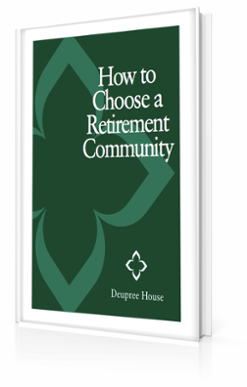
One planning question many seniors have when considering a move into a retirement home or assisted living community is whether they must sell any properties they own, including their primary residences, vacation homes, or investment properties.
The Simplest Answer
The simple answer is that there is no simple answer. It depends on how you’re funding your retirement care, whether or not it is a primary residence, and whether or not anyone is still living in the home.
Suppose you’re funding your assisted care through your 401(k), IRA, or another private retirement asset. In that case, you don't have to sell any of your property unless you need to liquidate it for unforeseen expenses.
If changes in Medicare or Medicaid have allowed you to subsidize any part of your care, the Centers for Medicare and Medicaid Services (CMS) will likely be entitled to recoup expenses paid for care on your behalf from your estate. Before Medicare or Medicaid payments may be made, the recipient must liquidate and spend down disposable assets.
What are "disposable" assets?
CMS in most states considers anything other than the recipient's primary residence and certain cash limits to be subject to spend down. Disposable assets include IRAs, 401(k)s, pension funds, bonds, vehicles, investment properties and second homes.
In the state of Ohio, a recipient's primary home is not typically counted among disposable assets. However, if a recipient is placed into nursing care or is away from the residence for two or more years without the expectation of returning, the state may file a lien and require the sale of a home to provide a source of payment for nursing care before an elder would qualify for Medicaid.
Can I transfer my assets to my spouse or relatives?
Not generally. That can be tricky, if not outright illegal.
You cannot usually gift or transfer title to adult and non-disabled children, other relatives, friends, or to most trust funds, without incurring an ineligibility penalty (meaning you are not eligible to receive Medicare or Medicaid benefits for a certain amount of time. This also is known as being placed on "sanction").
In the case of a married couple where one partner is entering an assisted living community and the other is still living independently, the house is protected if it is the independent spouse's primary residence. But any jointly-held assets are subject to spend-down to the limit the state defines on the Medicaid recipient's portion of ownership.
For example, a couple owns two homes: one is the couple's primary residence in Cincinnati, and the other is a vacation condo on the Gulf of Mexico worth $300,000. The home in Cincinnati would be protected as long as the independent spouse lives there.
However, the couple would have to sell the condo as, generally speaking, $150,000 of the proceeds would be recoverable by the state — the half for which the state would hold the recipient responsible for ownership. The laws may vary from state to state, so it is best to seek counsel from a lawyer specializing in your state's Medicaid eligibility regulations.
Are there any other alternatives to selling?
If selling your primary or vacation property isn’t right for you and you’re unable to transfer the title, you may want to consider renting out your property.
These days, rental options include long-term and short-term (i.e., Airbnb-style) situations. By generating income that can help pay for your new home in a retirement community, a rental arrangement can also help you hold onto a property you’re emotionally attached to or wish to pass down to your children.
However, it’s essential to understand that rental properties require some type of manager. Factor in the cost of a professional manager if you need one, or talk to trusted relatives who live nearby.
If you choose to go the rental route, you can be as loosely or fully involved as you want to be with property management. Outdoor-mounted and “doorbell” cameras can help you keep an eye on your property from the comfort of your independent living community. You can also monitor all electronic correspondence and bank deposits related to the rental by staying in touch online.
What if a dependent other than a spouse still lives in my home when I enter assisted living?
A Medicare or Medicaid recipient may, in most states, freely transfer the title for a primary residence (not for disposable assets), without incurring an ineligibility penalty, to any of the following:
- A blind or permanently disabled (meaning the individual is receiving SSDI payments) child who is under 21 years old;
- A child of the recipient, who has lived in the house for at least two years before the recipient enters into a retirement home and who, during those two years, provided care that allowed the recipient to avoid a nursing home stay;
- A brother or sister who (a) has lived in the home for the entire year immediately preceding the Medicaid recipient's entry into assisted living, and (b) who holds an equity stake in the property; or
- Into a trust that has been established for the sole benefit of a disabled individual under the age of 65 (even if the trust is for the benefit of the Medicaid applicant, under certain circumstances).
How do I figure out the best retirement plan to fit my needs?
The best course of action is to start planning early with help from a legal expert and/or certified financial planner who specializes in eldercare law and your state's Medicare and Medicaid regulations. Then be flexible enough in your planning to be able to adjust as circumstances require.
If you are already thinking about your retirement care options for the near (or distant) future, now is the time to start making decisions and making your loved ones aware of your wishes. First and important steps include speaking with a lawyer and draw up a living will, designating your medical and financial powers of attorney, and establishing advance directives. With the proper planning, you can make your transition to assisted care as seamless as possible.












